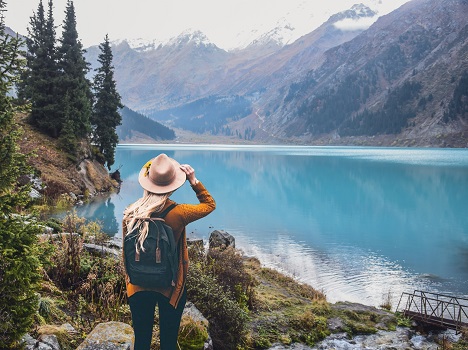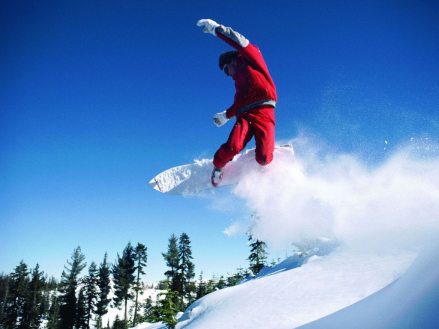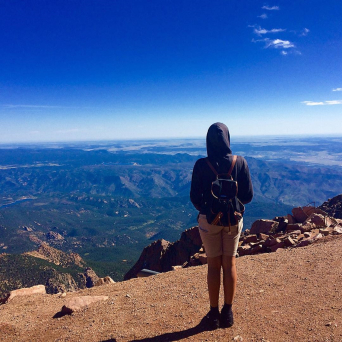- Share
The rapid development of domestic tourism in Kazakhstan has revealed a demand for organized wildlife photography tours. Of course, such tours are interesting for foreign travelers too.
Kazakhstan is a good place for watching big and unique mammals like bears, argali, alpine ibex, moose, maral, goitered gazelle and saiga. You can try your luck and take part in photo hunting leopards, lynxes, manul cats and musk deer, but the chances are slim here, even though camera traps and scientific observations confirm the presence of these animals here. Before listing places of habitat of these or other animals, you should take some recommendations of a famous Kazakhstan author and presenter of a nature program, an experienced operator – Maksim Levitin:
– Those who come to Kazakhstan to shoot photographs of wild animals, should clearly realize that there might be not as many animals as in other countries, e.g. countries in Africa or America. If a traveler wants to have a picture of an animal in the wild, and not inside a cubicle, it is advised to be prepared for a serious journey.
Photo hunting in the mountains, steppes and wetlands differs vastly from each other and each requires a different approach, different equipment and clothing. If you are going to the mountains, be ready to sleep in tents. At a height of 3000 meters above sea level the temperature goes below zero degrees even in the summer. You should have a warm and light sleeping bag, hiking boots and appropriate clothing, and most importantly good hiking skills. If you are able to deal with climbing a kilometer vertically, with 20 kg package on your back, then you can think of mountain shooting. But if this is challenging for you, then it is better to abandon this idea.
It is very important to have a reliable and properly suited transport if you are going to the steppes or desert. On rivers and lakes it is, of course, a water transport.
Wildlife photographers in Kazakhstan use at least 20 mm lenses, because they have to make photos from a distance of 200 meters and more.
And of course, the key to success of any photo hunting is an experienced guide. Even if you are an expert in wildlife and know everything about wild animals; a local resident of a remote region, anyways, would know much more about tracks and locations of animals’ concentration. For instance, you may want to go to the mountains on horseback, but it might be lethally dangerous to do that, because of rugged rocky terrain.
Now let’s talk about an important aspect of the eco-photo tourism. By definition, ecotourism is intended to conserve local ecosystems. How can eco tourists contribute to the preservation of landscapes, flora and fauna? There is only one way: by creating demand on untouched landscapes and its rich wild nature. People usually do not think of those valuable resources. When photographs pay local people (guides, horse holders, house landlords) for some service, they create demand for untouched wild nature. Local people, when they get paid, start to realize that they wouldn’t mind to keep this source of income.
If travelers pay money for taking photos of animals, local people will be motivated to increase the number of wild animals, so as to making hunting with cameras a tad bit easier.
Photo hunting can be a good alternative to trophy hunting, only if eco tourists will pay more or less appropriate sums. If travelers cannot or do not want to pay local people for their services, they should not be wondering why they are not welcomed. Due to the exponential growth of the Earth's population', places with a lack of population are becoming exclusive and expensive.
Now we will tell you about places in Kazakhstan, where if you have the physical capabilities, you can make unique photos of wild animals.
Bears, elks and deer of East Kazakhstan
Let’s start from East Kazakhstan, because right here you can find different types of animals in the wild and untouched nature. Here we have tour companies that are ready to organize photo shoot tours upon request.


В статье были использованы фотографии с сайтов: agroinfo_kz , forbes.kz , NewTimes.kz
–In the mountains of Saur you can watch unique subspecies of argali typical to only this region, - says an owner of a tour base - Aelita Akhmetsalimkyzy. On the foot of Saur, there are more semi desert areas and steppes; but higher up, you will see forests of Siberian larch and Tien Shan fir. At even higher altitudes you can reach some sub-alpine grasslands and even glaciers. In these various zones of nature, travelers and photo hunters have a chance to see elk, bear, roe deer, groundhog, fox, boar, grouse, snow cock, woodcock and many others. And this is only the most common inhabitants. In the mountains you can also see animals that are enlisted in the Red Book. Moreover, local people can tell you about frequent tracks of the mystic snow leopard. And even if you are not likely to meet this animal, there is still some chance! On the other side of East Kazakhstan close to Ridder town, local tour centers can offer you photo hunting from a viewing platform.
– Our center is on the bank of the taiga river Chernaya Uba which is 50 km from Ridder, - says the owner of eco-forest – Evgeniy Sidelnikov. We are far from big metropolises, and that’s why landscapes are untouched here. No wonder that here in Rudni Altai, where Ivanovskiy, Lineiskiy, Ulbinskiy, Khalzun and Koksu ridges start and the Belaya and Chernaya Uba, Turgusun and Barsuk rivers are located, West Altai Reserve was established. But beyond specially protected natural areas, the wilderness is not any less amazing. More than 200 types of animals inhabit here, and you won’t find this kind of truly wild taiga anywhere else in Kazakhstan. In order to see animals in their natural habitat, all you need is just to be patient and to have physical capabilities.
- Any photo hunting individual should be accompanied by a forest guide. As the animals are known to be extremely cautious, only an experienced guide can show and discreetly lead you to them for shooting. For example, despite their bad vision bears have very good hearing and sense of smell, that’s why as soon as they feel and hear the slightest noise of people, they bail from that area as fast as possible. Mother bear acts totally differently – it is better to give her and her baby bears some space and step back and away. The best season to watch bear is spring and the beginning of summer, when mountain slopes are open for observation. Other inhabitants of taiga such as elk, roe deer, and deer can be watched from the special viewing platforms.
– Photo hunting is undoubtedly exciting, which is why every weekend I leave for the forest, which is also quite close, - says Aleksandr Klimenko, an amateur photographer from Ridder, and recipient of a lot of photo competitions’ awards. - Every time I meet animals, I get new impressions and emotions. My adrenaline goes up whenever I encounter a bear, but when I see roe deer, elk, deer and birds I truly try to admire their beauty endlessly (as long as they allow before going away). You really feel how you connect with nature…
National parks animals
You can see quite close and make photos of semi wild elks in the Buyratau National Park, 3 hours away from Astana. Deer live in cubicles here. The place is also known as Wild Animal Park, because there aren't only elks, but other animals as well. You will be welcomed by a hospitable staff who work for the park, they will enlighten you on everything about the wildlife. If you want to stay overnight, there is a small hotel “Tikhiy kordon”.
Watching animals in an atmosphere closer to natural has intellectual and aesthetic values even in restricted areas.

Even Altyn-Emel National Park can be proud of its places created for good photo hunting. The park has a well-developed tourism infrastructure: comfortable hotels, equipped tour routes, roads of good quality, allowing not only to see all the landscapes (mountains, plains, floodplains, forests, sands), but also hoofed desert animals (kulan and goitred gazelle), from certainly close distances.
On the territory of Aksu-Jabagly Nature Reserve, which was established with the aim to preserve the untouched rivers Aksu and Jabagly with their trees and bush planting, and animals as a natural landmark, you can see and take photos of ibex (tau teke in Kazakh) from quite a close range. You can also see Tien Shan bear, roe deer, porcupines and other Kazakhstan animals.
It has to be said that watching animals is allowed in all specially preserved natural areas. But, as was advised earlier by Maksim Levitin, in any case anywhere you go you should have a good guide. You can get more information from either tour companies of the region or national parks and reserves. A local guide will help you to make a mini expedition of getting good successful shots and get the most out of your trip.

















